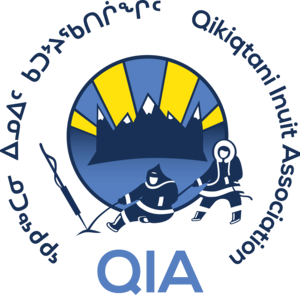Community members explained to us that the freedom to travel, gather, and camp across Baffin Island is important in its own right, and that these activities an inseparable part fishing, and marine and land-based hunting and harvesting. Inuit from the five communities told us and showed us important places where people congregate and camp, and travel routes both across land and water to access hunting, fishing, trapping, and berry picking sites. We learned that community members use many different ways to get around, including snowmobile, all-terrain vehicles, dog teams, by boat, and on foot.
Community members emphasised that the ability to travel and camp across Baffin Island is important to their way of life and essential to their ability to hunt, fish, trap, and gather. We learned that Inuit are always watching the conditions and the seasons, which determines where people go and how they get there.
We heard that travel also ties communities together, and so are important for social connections, and that many path travelled today have been used for generations. Trails and travel routes also lead to gathering places.
She remembers … there would be people going – coming back from Mary River area, their dogs, and the people would be walking from Mary River, in the summertime, carrying loads of caribou, on their way to Arctic Bay. So they would sometimes stop through there. And then because Mary River used to – the area used to have – it was a prime caribou hunting area, so anyone – anybody from Arctic Bay and Pond Inlet that used to go to Mary River area for caribou hunting. So it was like a path from Arctic Bay to Mary River. (A04 2020)
Community members described how many trips can last days or even weeks at a time, and that these long trips are actually great opportunities for teaching and learning on the land. In this vein, we also learned that travel is important for exploration. Community members discover new places to hunt, visit areas recorded in ancestral stories, and contributes to the continued evolution of IQ and culture.
[Interviewer: What’s special about a longer trip?] Like being out on the land or not being at home. You’re, like, experiencing the land. Seeing something new out on the land instead of just staying home. Yeah. We’re learning something new about history of the place. (P21, 08-Feb-19)
We also learned from community members that campsites and cabins are usually located close to important resources, such as freshwater, good fishing sites, or habitat for caribou, polar bears, walrus, seals, and narwhal, for example. Some of these camps and cabins are used only for short periods of time, while others are used repeatedly, and may also include more long-lasting buildings.
Important Camps and Trails
Trails and travel routes crisscross Baffin Island, including across the sea over the ice. Many Pond Inlet trails are located on the sea ice in Eclipse Sound, in particular towards the floe edge at Guys Bight, down Navy Board Inlet to the floe edge at Lancaster Sound and from Eclipse Sound to Qinngua. The Phillips Creek watershed is also the site of a large number of important travel routes, leading to Igloolik and into the interior regions of Baffin Island.
Arctic Bay and Clyde River residents mapped and described to us how they travel to Pond Inlet along the sea ice, and how they make their way between communities, camping and harvesting along the way. The Mary River area was also identified by community members as a historically high-traffic area, both in terms of travel routes and gathering places. These people used to get to hunting and fishing places, for example.
Talking with Iglulik and Sanirajak community members, we were shown many trails and camping areas on the sea ice along the shoreline of Foxe Basin, and especially around the Fury and Hecla Strait. Trails were also mapped going towards Pond Inlet and into the interior of Baffin Island. There are also many campsite in and around Ikpikitturjuaq.

